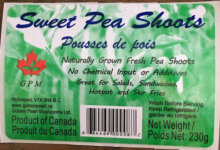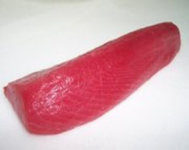Due to the Canadian Food Inspection Agency (CFIA) test results, Golden Pearl Mushrooms Ltd. recalled GPM brand Pea Shoots from the marketplace due to possible Listeria monocytogenes contamination. The recalled products include GPM Sweet Pea Shoots and GPM Pea Shoots. There have been no reported illnesses associated with the consumption of these products. @ https://www.inspection.gc.ca/about-the-cfia/newsroom/food-recall-warnings/complete-listing/2019-04-19/eng/1555725095376/1555725097506
ruth
https://www.inspection.gc.ca/about-the-cfia/newsroom/food-recall-warnings/complete-listing/2019-04-19/eng/1555725095376/1555725097506
ruth
According to the Centers for Disease Control and Prevention, 8 people infected with the outbreak strain of Listeria monocytogenes have been reported in 4 states (Michigan, Pennsylvania, New-Jersey, and New-York). All 8 people have been hospitalized, and one death has been reported from Michigan. Epidemiological data indicate that meats and cheeses sliced at deli counters might be contaminated with Listeria monocytogenes and could make people sick. WGS performed on Listeria isolated from ill people in this outbreak showed that they are closely related genetically. The outbreak strain has been identified in samples taken from meat sliced at a deli and from deli counters in multiple stores. The CDC did not identify a single, common supplier of deli products. The outbreak strain has been identified in samples taken from deli products and deli counters in multiple locations. @ https://www.cdc.gov/listeria/outbreaks/deliproducts-04-19/index.html
Outbreak of Listeria Infections Linked to Deli-Sliced Meats and Cheeses
ruth
On April 15, 2019, the CDC issued a food safety alert about a multistate outbreak of Salmonella Newport infections linked to frozen, raw ground tuna supplied by Jensen Tuna. A total of 13 people infected, with the outbreak strain of Salmonella, have been reported from seven states (CT, IA, IL, MN, ND, NY, and WA). Two people have been hospitalized. No deaths have been reported. The recalled tuna was probably not sold directly to consumers in grocery stores but was likely used in food dishes sold by restaurants or retailers. @ https://www.cdc.gov/salmonella/newport-04-19/index.html
Outbreak of Salmonella Infections Linked to Frozen Raw Tuna
ruth
FDA claims that there are some companies who knowingly distribute and sell dangerous or otherwise illegal products that put consumers at risk, and FDA vows not to allow these companies to compromise the health of people. The FDA is launching a new tool to quickly alert the public when they become aware of ingredients that appear to be unlawfully marketed in dietary supplements. This Dietary Supplement Ingredient Advisory List will be housed on the FDA website. Ingredients will be added to the List following an initial FDA assessment indicating the ingredient may not lawfully be in dietary supplements. FDA states that “As the dietary supplement marketplace has grown, the introduction of new ingredients often raises complex questions involving science, policy, and the law.” Eleven companies received warning letters, FDA is ready to take enforcement action without further notice if the companies do not immediately cease distribution of the products. @ https://www.fda.gov/NewsEvents/Newsroom/PressAnnouncements/ucm636132.htm?utm_campaign=041619_PR_FDA%20takes%20new%20steps%20to%20protect%20consumers%20in%20dietary%20supplements%20arena&utm_medium=email&utm_source=Eloqua
FDA Statement from Deputy Commissioner for Food Policy and Response Frank Yiannas on new steps to protect consumers from unlawful ingredients in dietary supplements



